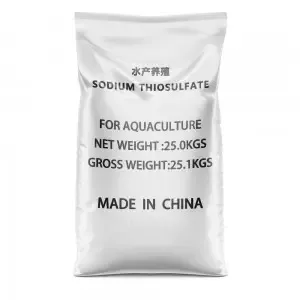



Analysis of potassium ethyl xanthate in froth flotation processes and its effects on efficiency
The Role of Potassium Ethyl Xanthate in Froth Flotation An Overview
Froth flotation is a widely used method for the separation and concentration of ores and minerals. It relies on differences in the surface properties of mineral particles to achieve separation in a liquid medium. One key component that has proven highly effective in the flotation process is potassium ethyl xanthate, a chemical reagent that serves as a collector. This article explores the significance of potassium ethyl xanthate in froth flotation, its applications, and the underlying chemistry that facilitates mineral separation.
Understanding Froth Flotation
Froth flotation operates on the fundamental principle of hydrophobicity and hydrophilicity. In essence, the objective is to render certain mineral particles water-repellent (hydrophobic) while keeping others water-attracting (hydrophilic). This selective modification allows for the desired minerals to attach to air bubbles introduced into the slurry, rising to the surface and forming a froth that can be collected, while undesired materials sink.
The Role of Potassium Ethyl Xanthate
Potassium ethyl xanthate (C2H5OCS2K) is an organosulfur compound that acts predominantly as a collector in the froth flotation process. Its chemical structure consists of an ethyl group attached to a xanthate group, providing it with properties necessary for effective mineral separation. Potassium ethyl xanthate is particularly effective in the flotation of sulfide minerals, such as copper, lead, and zinc.
When added to the flotation cell, potassium ethyl xanthate interacts with mineral surfaces, binding to specific metal ions. This interaction modifies the surface energy of the mineral particles, increasing their hydrophobicity. This hydrophobic coating allows the modified particles to attach to air bubbles when introduced into the flotation cell. As a result, the targeted minerals ascend with the froth, separating from the gangue or unwanted materials that remain submerged.
Chemical Mechanism and Selectivity
potassium ethyl xanthate in froth floatation

The efficiency of potassium ethyl xanthate in the froth flotation process can be attributed to its chemical structure. The xanthate functional group has a strong affinity for metal ions, facilitating the formation of metal xanthate complexes on the surface of mineral particles. This complexation is selective based on the type of metal present.
For instance, in copper flotation, the xanthate preferentially binds to Cu^2+ ions, promoting the flotation of copper sulfide minerals like chalcopyrite (CuFeS2). This selectivity is crucial since it ensures that the desired mineral rises to the surface, allowing for effective separation from other minerals in the ore.
Considerations and Challenges
While potassium ethyl xanthate is highly effective in many applications, its use is not without challenges. The concentration of potassium ethyl xanthate must be carefully monitored, as excessive amounts can lead to the flotation of undesirable minerals or negatively impact the overall process efficiency. Additionally, environmental considerations regarding the disposal of tailings containing xanthates are increasingly important, necessitating approaches that minimize ecological impact.
Furthermore, the performance of potassium ethyl xanthate can be influenced by the pH of the flotation slurry. Conducting flotation at the optimal pH ensures that the xanthate remains stable and effectively collects the target minerals. Adjusting the pH often requires the addition of other reagents, further complicating the flotation process and demanding precise control.
Conclusion
Potassium ethyl xanthate plays a vital role in the froth flotation process, acting as a collector that enhances the hydrophobicity of mineral particles and enables the effective separation of valuable ores. Its chemical properties allow for selective attachment to metal ions, facilitating the concentration of various sulfide minerals. Despite the challenges associated with its use, proper management and optimization can lead to efficient flotation outcomes. Continued research into the applications and improvements of potassium ethyl xanthate will likely contribute to enhanced mineral processing techniques and a more sustainable approach to resource extraction. As the mining industry evolves, the significance of effective reagents such as potassium ethyl xanthate remains pivotal in ensuring both economic and environmental sustainability in mineral recovery.
-
Why Sodium Persulfate Is Everywhere NowNewsJul.07,2025
-
Why Polyacrylamide Is in High DemandNewsJul.07,2025
-
Understanding Paint Chemicals and Their ApplicationsNewsJul.07,2025
-
Smart Use Of Mining ChemicalsNewsJul.07,2025
-
Practical Uses of Potassium MonopersulfateNewsJul.07,2025
-
Agrochemicals In Real FarmingNewsJul.07,2025
-
Sodium Chlorite Hot UsesNewsJul.01,2025










